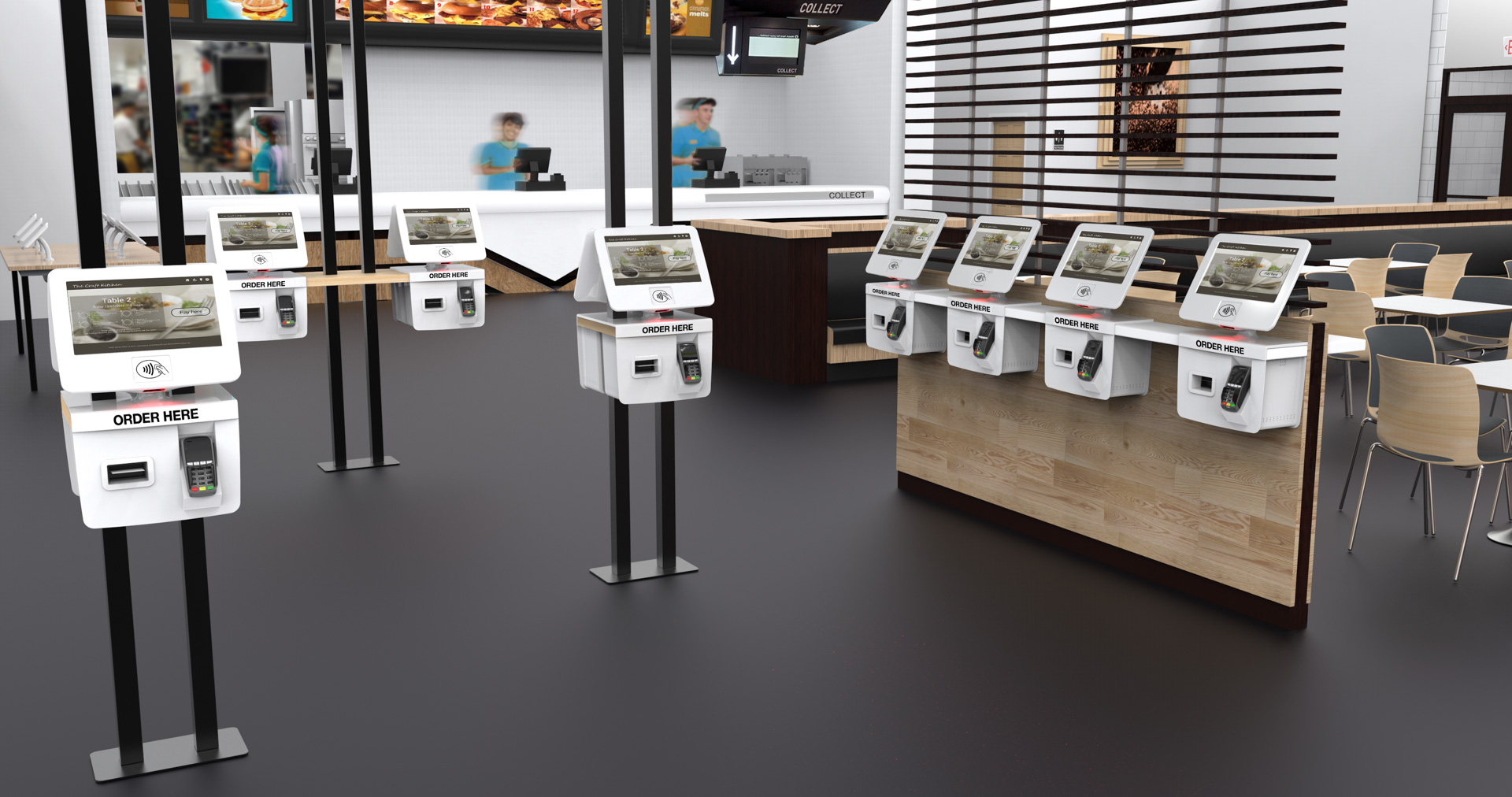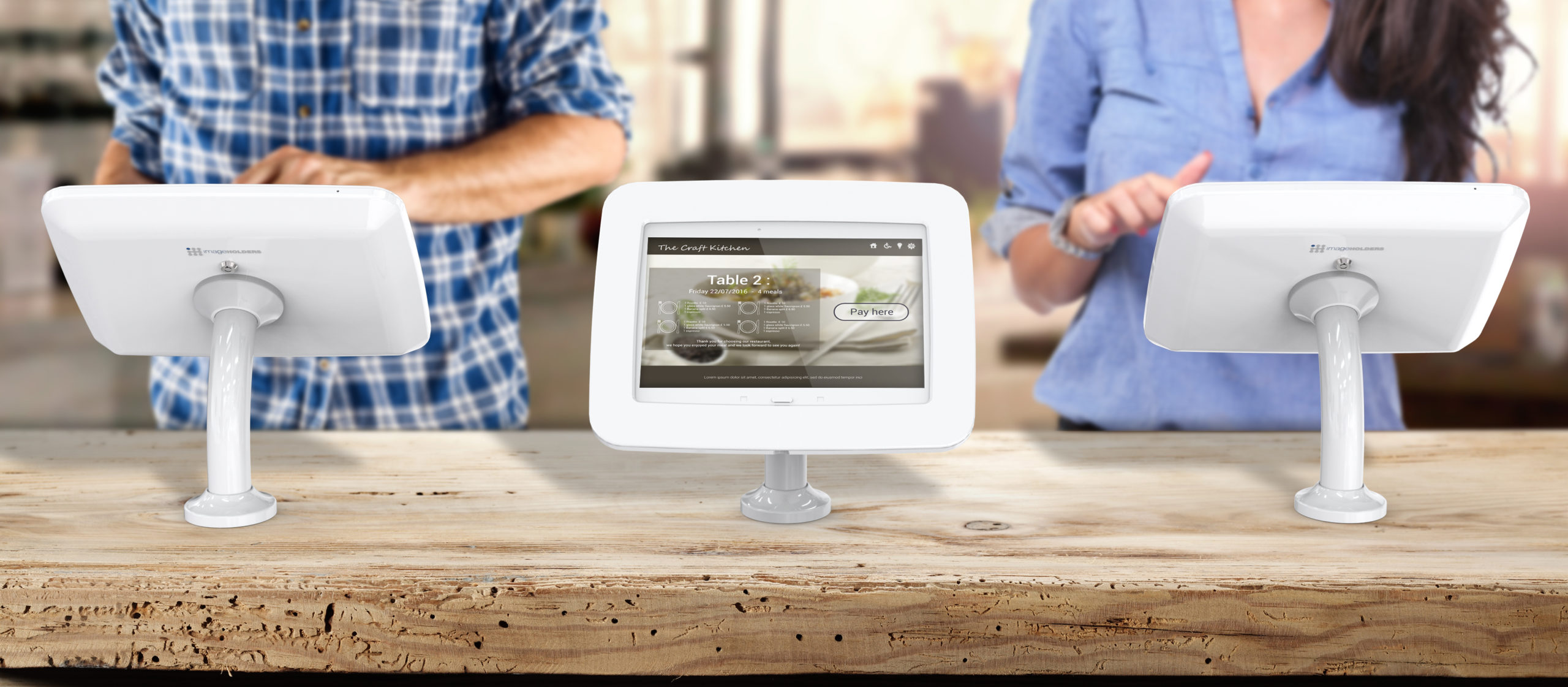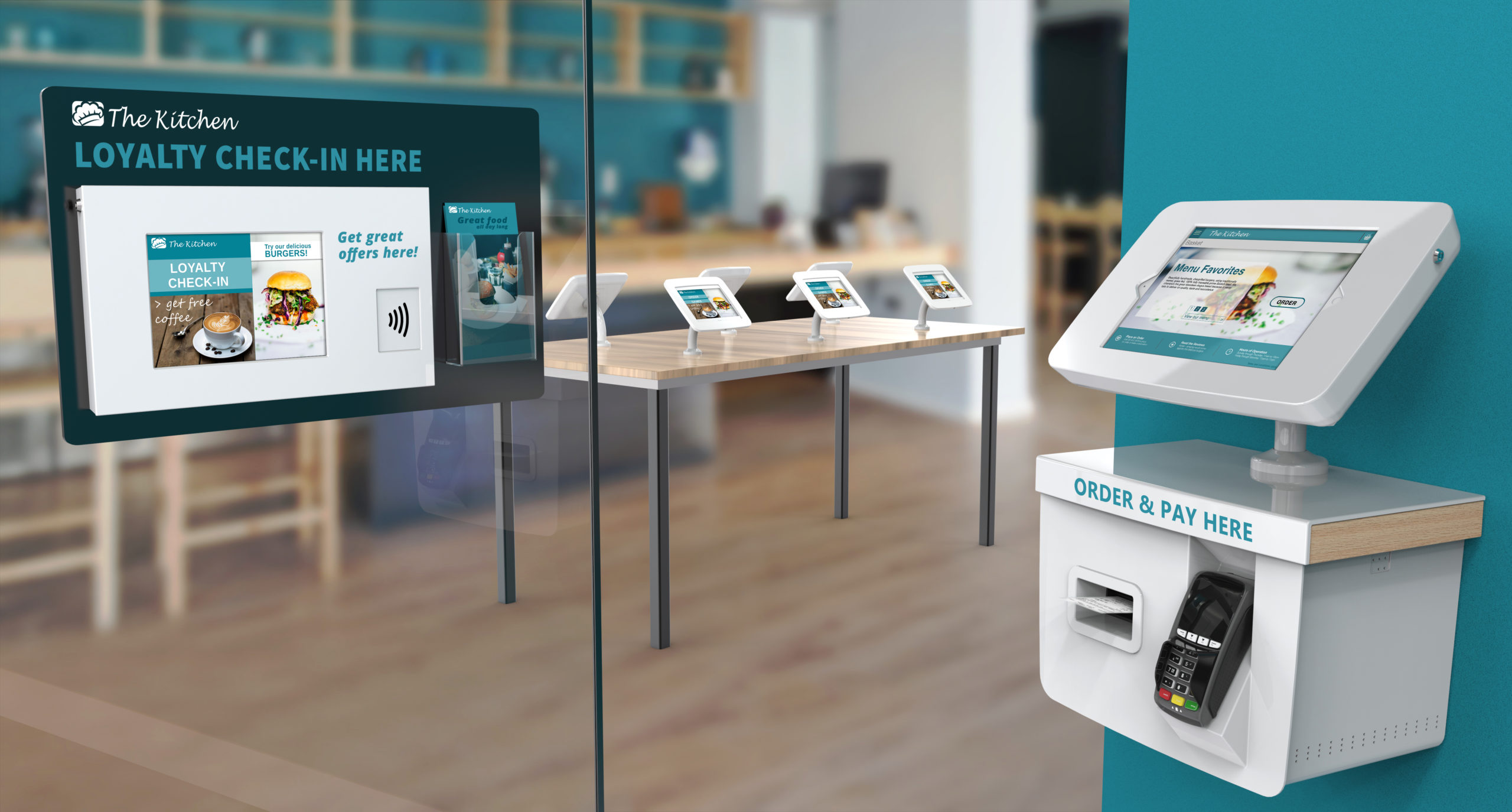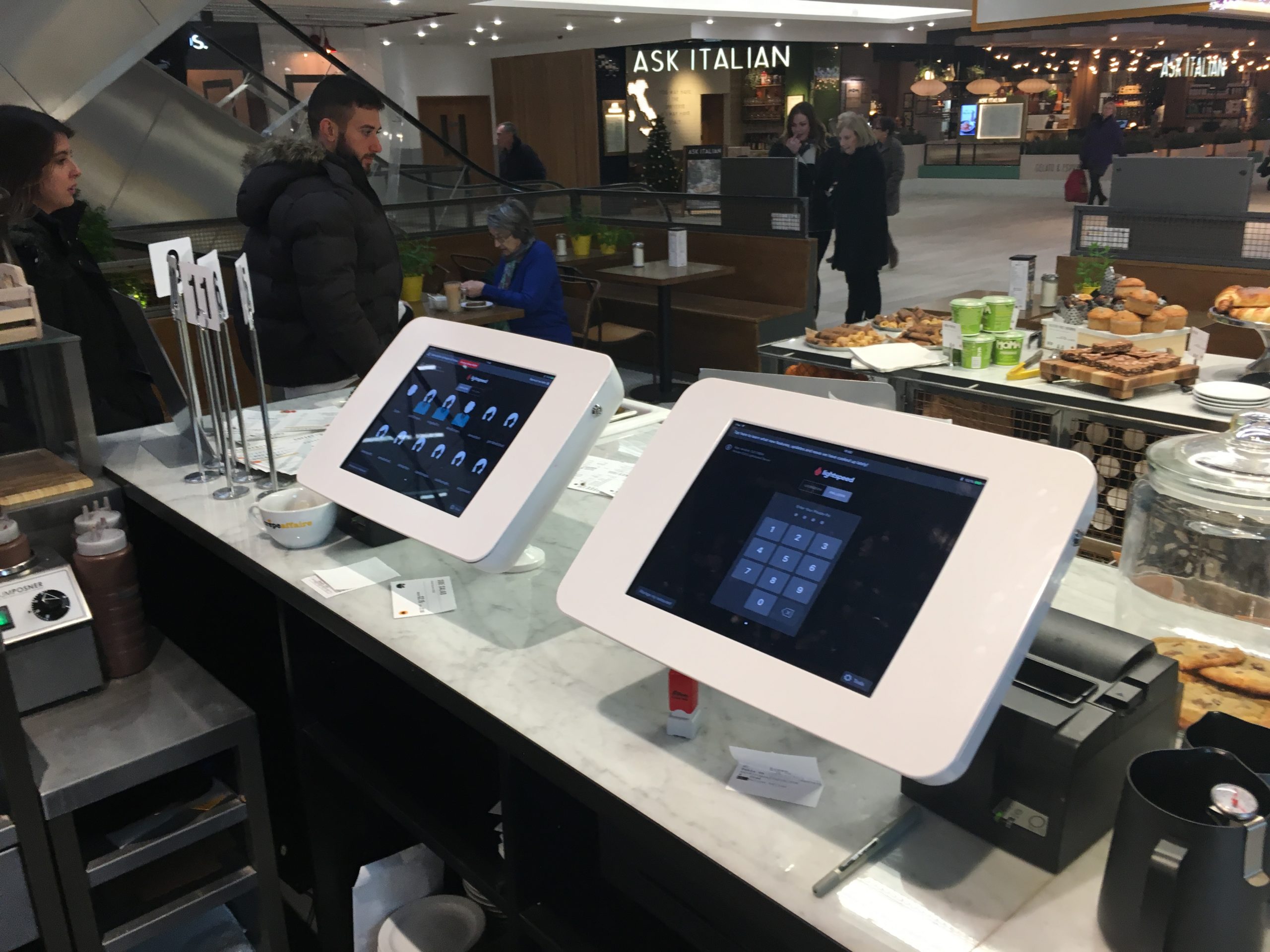No Restaurant Too Big, No Café Too Small
Technology has revolutionised how we choose where to eat and where to stay, so it’s only natural for people to expect technology to aid them in their dining experiences. The hospitality industry is utilising technology to improve services such as concierge desks, entertainment hubs, express check-outs and POS terminals.
We look at the technology revolution within the restaurant industry, and how with the rise in tablet technology, small companies are also able to take full advantage.
Technology Revolutionising Fast-Food Restaurants
Many industries are seeing technology greatly impact their traditional structure, and none more so than the hospitality and restaurant industry.
From McDonald’s to Panera Bread, fast food restaurants are recognising the potential which iPad enclosures provide, and are starting to reap the benefits. A recent study by the University of Oxford revealed that there is a 92% chance that the entire quick service restaurant process will become completely automated by 2030, enabling staff to focus on customer service and experience.
By combining in-house services with a digital experience, restaurants can save up to five minutes per meal, and can see orders being increased by 30%. Food kiosks also encourage up-selling by providing a constant temptation with stunning visuals on digital menus displayed on table top tablets. By streamlining production and payment processes, restaurants can increase customer satisfaction and ultimately, increase business revenue.
Fast-Food Doesn’t Mean Minimal Service
McDonald’s have combined self-service kiosks with table service, blurring the divide between good service and quick service. Customers can order from a self-service kiosk, which is integrated with a chip and pin device, contactless reader and printer. Customers can then choose a zone, and have their food delivered to them, whilst they use entertainment hubs equipped with the latest Samsung tablets to browse online content or entertain the kids. When it comes time to deciding if the kids have been well behaved enough to get a McFlurry, the often off putting thought of rejoining the queue is removed, as ordering from the self-service kiosk is easy and extras quickly delivered to your table hassle free.
By moving towards self-service payment and ordering systems, McDonald’s have established table service, providing better customer service without the need to increase costs with extra staff. McDonald’s may have a vast budget and departments focused on research and development, but the time has already been invested to prove that when it comes to integrating technology, it works. Size and budget no longer stops smaller cafes or QSR’s from adopting technology, as there is a solution for any business.
Small cafes or restaurants can manage lunchtime traffic by using a queue busting kiosk, such as the Slimline 12 secure wall mounted kiosk for large screen tablets. Customers can place their order and receive a ticket or number, and collect their food from the counter when it’s ready. Saving money otherwise spent on extra members of staff who work a full shift but are only really needed for the 45 minutes lunch time rush. By giving control to customers, they can pay using the kiosk, or at the bar when collecting their food, and be able to pop out to take a call or use a cash machine before coming back and collecting their food. Ensuring that the kitchen is able to work out capacity, without extra costs cutting into profits.
The combination of technology and personable service removes the stereotype that Quick Service Restaurants, (QSR’s) are not about quality customer service. Whether or not your food is incredible, if the service was below acceptable, it’s unlikely you will return. Good service breeds loyalty.
How Can Tablet Kiosks Improve Service?
Technology isn’t just for large corporations. Tablet kiosks work within independent coffee shops or international fast food chains. Tablet kiosks have proven business cases to change processes for the better within all restaurants.
New technologies such as tablets, have enabled smaller businesses to take advantage of technology, which before was only used by large corporations able to absorb the higher costs. Tablets have a low cost of ownership, and the devices which are now being designed specifically for tablet kiosks are also seeing reductions in cost and size, lowering the overall cost of ownership and the cost of entry for businesses to implement self-service solutions.
There are a number of benefits of utilising tablet technology within restaurants such as:
- Queue busting
- Express ordering
- Digital menus
- Entertainment hubs
- Loyalty schemes
- Higher rate of upsell
Tablet kiosks can be integrated with a variety of different devices, such as chip and pin machines or receipt printers. This integration provides multiple solutions. Customers can place an order, pay and sign up to receive newsletters within one kiosk, providing multiple solutions for the price and retail space of one.
It’s Not Just About the Payment Systems
Not all restaurants need to have a self-service POS kiosk. But every restaurant will utilise some form of technology.
Customers can sign up to loyalty schemes, or browse new deals whilst others use entertainment tablets to surf the internet, or play games. Technology can provide new solutions, as well as replacing old systems.
Simple requirements such as printers can be integrated to provide a multi-solution kiosk. Nearly all facets of restaurants require printers, from receipts to kitchen orders. When customers order using a tablet kiosk, an instant message can be sent to the kitchen, printing out the order stub.
Even new legislation is increasing the need to integrate printers into back of house processes. New allergen guidance which requires restaurants to label food with use by dates, can be linked to a tablet which enables staff to choose use by dates, dietary requirements, and allergy warnings. All within an easy to clean, simple and secure tablet kiosk.
Restaurants Need to Consider Omnichannel Strategies
Self-service was once an under-utilised solution. Now, self-service POS kiosks are familiar within many environments and are giving customers more control over the way they interact with organisations. However, it is important for companies to look at the bigger picture and ensure their instore technologies complement the overall customer journey by considering an omnichannel approach.
Starbucks recently revealed that their mobile apps are driving an increase in revenue with a simple self-service ordering system. However, this is impacting baristas who are struggling to keep up with the increase in orders, with both mobile, instore and drive through.
If Starbucks can’t combine their mobile ordering with the instore experience smoothly, their attempt at an omnichannel solution could result in bad customer service, unsatisfied customers and a negative impact on loyalty.
By introducing self-service POS kiosks in store, customers could select and tailor their drink, pay using card or cash, and receive a printed receipt in one smooth transaction. The previous area where staff took orders, can be replaced by one simple kiosk which prints out orders with a label which can be affixed to the cups. By integrating self-service kiosks within their stores, Starbucks could remove the ordering point, and create a larger barista area, increasing revenue and consumer satisfaction.
Tablet Kiosks and Restaurants
By using technology to create loyal customers, restaurants can ensure that the expectations of their customers are surpassed with superior experience and service. Tablet kiosks have been designed to be stylish and inviting to encourage customers to interact with the technology, and assist restaurants in moving their customers towards a self-service solution, freeing up their staff to focus on the high value side, whether that’s production or service.
imageHOLDERS have worked with both global and independent restaurants to implement tablet technology. By implementing technology in an intuitive way, all departments and services can be linked, and provide a seamless omnichannel experience.
imageHOLDERS specialise in tablet kiosks and device integration, ideal for retailers and self-service industries. For more information call +44 (0)1202 892863 (UK) or +1 877 450 2172 (US) or email [email protected].
Click here to sign up to our monthly newsletter to receive our latest blogs and insights.
This article was written for Kiosk Solutions and is published in the December/January issue. To see the original article click here.



